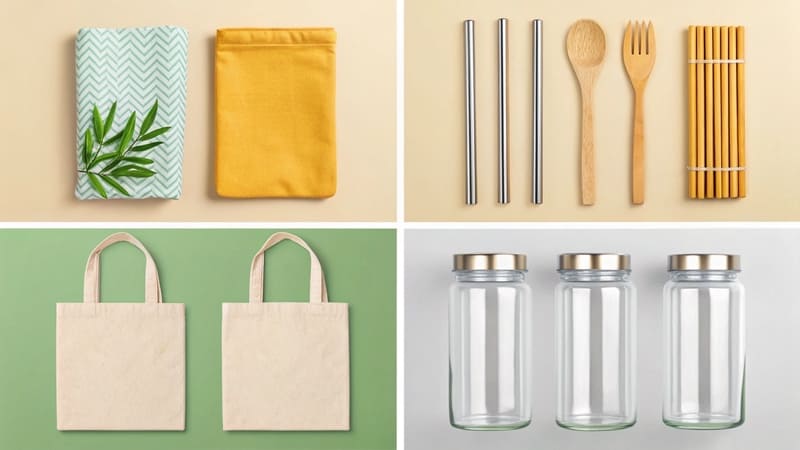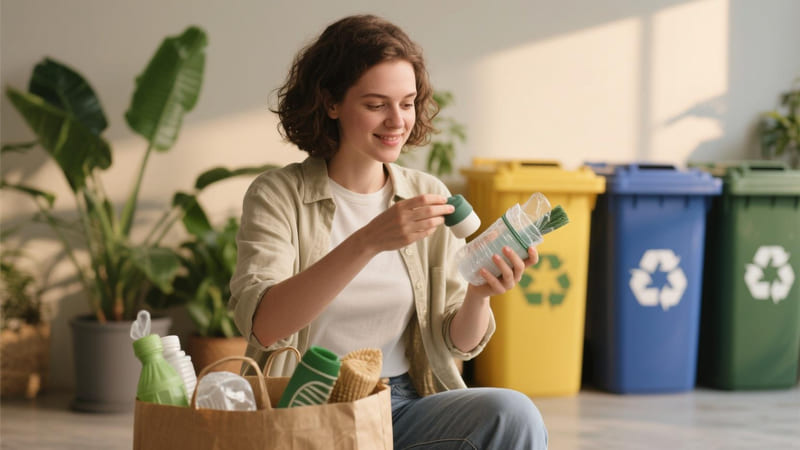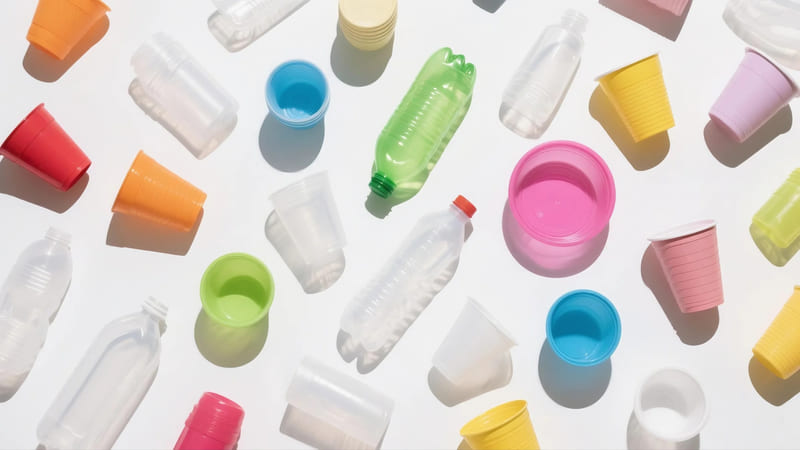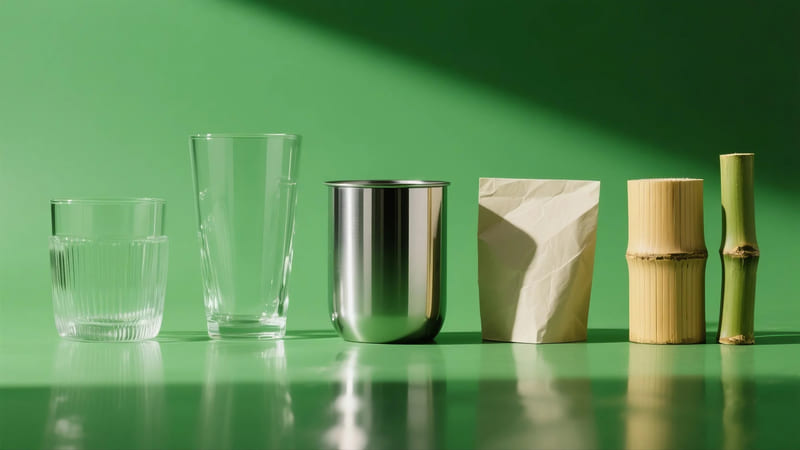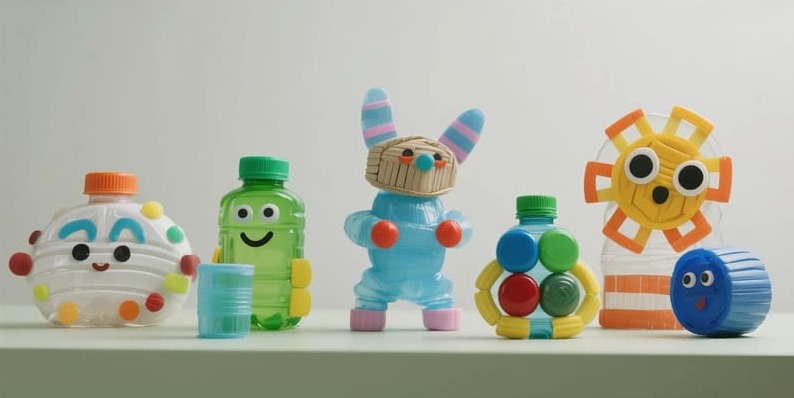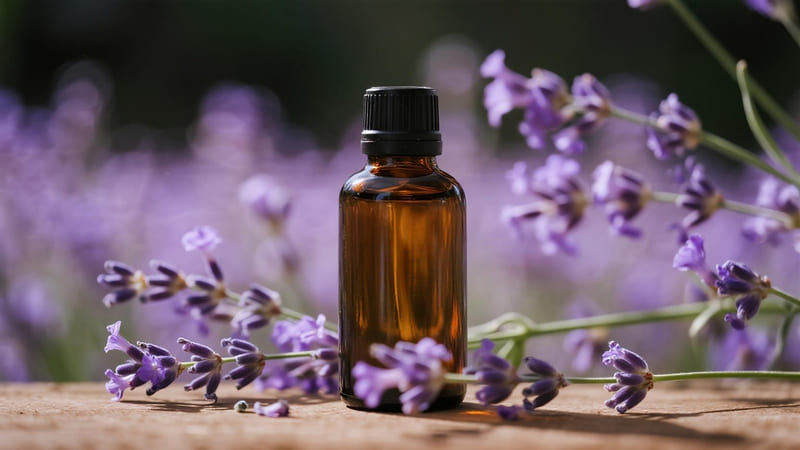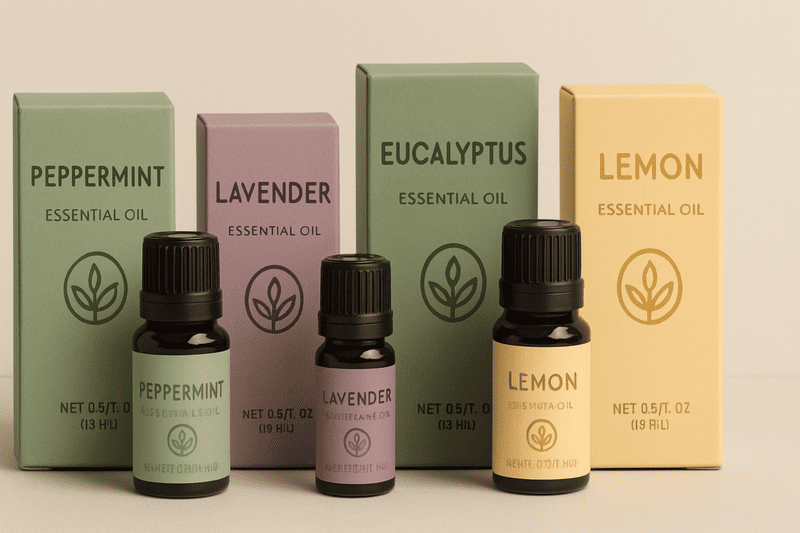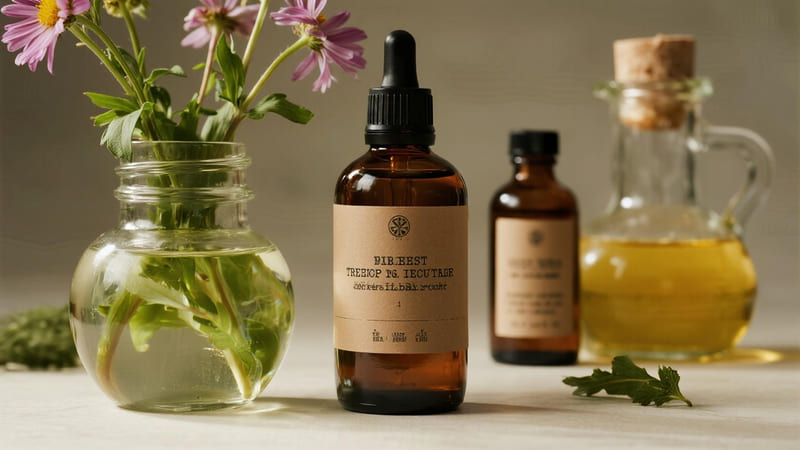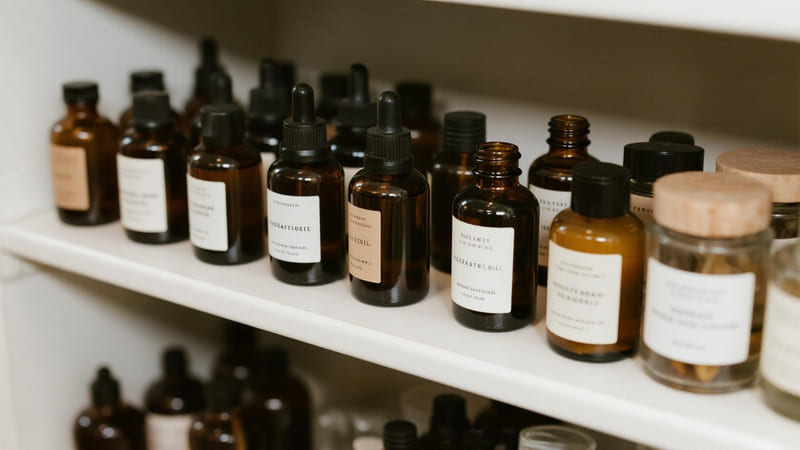Plastic is woven into the fabric of our daily lives, often in ways we don’t even realize. But the good news is that many common single-use or problematic plastic items have readily available, eco-friendlier alternatives. Making these swaps can significantly reduce your personal plastic footprint.
Some easy swaps for everyday plastic products include using reusable shopping bags instead of plastic ones, carrying a reusable water bottle and coffee cup, switching to bamboo toothbrushes, using solid shampoo/soap bars instead of bottled liquids, opting for beeswax wraps or reusable containers over plastic cling film, and choosing stainless steel or glass straws.
Reducing our reliance on plastic, especially single-use varieties, is a crucial step towards a healthier planet. As a packaging manufacturer with ShineTop, we’re increasingly focused on providing sustainable packaging alternatives, and I believe these individual consumer swaps complement those larger industry shifts. Let’s explore some simple yet impactful changes you can make.
How to Replace Plastic in Daily Life?
Replacing plastic in daily life is about making conscious choices and gradually incorporating sustainable alternatives into your routines. It doesn’t have to be overwhelming; start with a few easy swaps and build from there.
To replace plastic in daily life, focus on areas with high single-use plastic consumption: carry reusable bags for shopping, use a reusable water bottle and coffee cup, opt for package-free or plastic-free toiletries (like bar soap/shampoo), choose food storage alternatives like glass containers or beeswax wraps, and refuse unnecessary plastic items like straws and cutlery when out.
A systematic approach, room by room, or habit by habit, can make the transition smoother.
Practical Ways to Reduce & Replace Plastic:
In the Kitchen:
- Shopping:
- Reusable Shopping Bags: Keep them in your car, bag, or by the door.
- Reusable Produce Bags: For loose fruits and vegetables instead of thin plastic ones.
- Food Storage:
- Glass or Stainless Steel Containers: For leftovers, lunches, and pantry storage.
- Beeswax Wraps or Reusable Silicone Lids/Covers: Instead of plastic cling film.
- Reusable Silicone Food Bags (Stasher bags, etc.): For snacks, freezing; more durable than single-use plastic bags.
- Drinks:
- Reusable Water Bottle: A must-have.
- Tap Water Filter Pitcher/System: Reduces the need for bottled water.
- Make Coffee/Tea at Home: Use a French press, pour-over, or tea infuser instead of single-serve pods (which are often plastic).
- Cleaning:
- Wooden Dish Brush or Compostable Sponges: Instead of plastic sponges.
- DIY or Refillable Cleaning Solutions: In glass spray bottles.
In the Bathroom:
- Personal Care:
- Bamboo Toothbrush: Biodegradable handle.
- Solid Toiletries: Shampoo bars, conditioner bars, soap bars, solid lotion bars to eliminate plastic bottles.
- Safety Razor (Metal): Replaces disposable plastic razors.
- Reusable Makeup Remover Pads: Instead of disposable cotton rounds/wipes.
- Menstrual Cup or Reusable Period Products.
- Natural Deodorant: Often in paperboard tubes or refillable containers.
- Toothpaste Tabs or Powder: In glass jars or tins, instead of plastic tubes.
Out & About:
- Refuse Single-Use Items:
- Say "no thank you" to plastic straws, cutlery, and bags when ordering takeout or shopping.
- Carry your own reusable set if you frequently eat out.
- Reusable Coffee Cup: For takeaway coffees/teas. Many cafes offer a discount.
General Habits:
- Buy in Bulk: For pantry staples (grains, nuts, spices) using your own containers at stores that offer bulk bins.
- Choose Products with Less Plastic Packaging: Opt for items in glass, metal, or paperboard. Look for brands using PCR (Post-Consumer Recycled) plastic if plastic is unavoidable. (ShineTop actively promotes PCR options to our clients).
- Repair Instead of Replace: Fix broken items rather than immediately buying new plastic ones.
- Shop Secondhand: For clothing, toys, household items to reduce demand for new plastic production.
Start with one or two changes that feel easiest for you, and gradually incorporate more.
What are Some Examples of Plastic You Use Everyday?
Becoming aware of how much plastic we interact with daily is the first step towards reducing its use. It’s often hidden in plain sight or has become so commonplace we don’t even notice it.
Examples of plastic used everyday include: food packaging (wrappers, containers, bottles, films), personal care product bottles and tubes (shampoo, toothpaste, lotion), disposable cutlery and straws, shopping bags, beverage bottles, cleaning product containers, synthetic clothing fibers (polyester, nylon), electronics casings, and children’s toys.
Plastic is truly ubiquitous. Here’s a more detailed look:
Morning Routine:
- Toothbrush (plastic handle, nylon bristles)
- Toothpaste tube (plastic/laminate)
- Shampoo, conditioner, body wash bottles (plastic)
- Face wash tube/bottle (plastic)
- Deodorant stick (plastic casing)
- Contact lens packaging/solution bottles (plastic)
- Hairbrush/comb (plastic)
- Makeup containers (compacts, tubes, bottles – mostly plastic)
Kitchen & Food:
- Food wrappers (chips, snacks, candy – often plastic film or laminates)
- Plastic containers for yogurt, butter, sauces, etc.
- Cling film/plastic wrap
- Plastic cutting boards
- Plastic utensils, plates, cups (especially disposable)
- Plastic storage bags (Ziploc style)
- Beverage bottles (water, soda, juice – PET plastic)
- Milk jugs (HDPE plastic)
- Lids on glass jars (often plastic with a liner)
- Coffee machine (plastic casing, pods often plastic)
- Dish soap bottle (plastic)
Out & About / Shopping:
- Plastic shopping bags
- Takeout food containers (often plastic or styrofoam)
- Disposable coffee cups (usually paper lined with plastic) and lids (plastic)
- Plastic straws and cutlery
- Credit cards, ID cards (plastic)
- Pens (plastic casing)
Household & Other:
- Cleaning product bottles (sprays, detergents – plastic)
- Trash bags (plastic)
- Electronics (casings for phones, laptops, TVs – plastic)
- Toys (many are predominantly plastic)
- Furniture (some components, or entirely plastic items)
- Clothing (synthetic fibers like polyester, nylon, acrylic are plastics)
- Car interiors (dashboard, trim – plastic)
Once you start looking, you’ll see plastic everywhere. This awareness is key to identifying opportunities for swaps.
What is the Best Alternative to Plastic?
There’s no single "best" universal alternative to plastic because plastic itself is so versatile and used in countless applications. The "best" alternative depends heavily on the specific function the plastic was serving.
The best alternative to plastic varies by application: For reusability and durability, stainless steel and glass are excellent (e.g., water bottles, food containers). For single-use packaging, aluminum and paper/paperboard (from sustainable sources) are often preferred for their higher recyclability. For films, beeswax wraps or compostable bio-films can be options. The ideal is often a material that is durable, non-toxic, renewable or highly recyclable, and suited to the product’s needs.
The goal is to choose a material that performs the necessary function with a significantly lower environmental impact.
Leading Alternatives & Their Strengths:
-
Glass:
- Pros: Inert, impermeable, preserves taste/purity, infinitely recyclable, premium feel.
- Best For: Food/beverage storage, reusable bottles, cosmetic/pharmaceutical packaging where inertness is key.
- ShineTop Use: We use glass extensively for premium cosmetic jars and bottles.
-
Stainless Steel:
- Pros: Extremely durable, long-lasting, inert, recyclable, often lightweight for its strength.
- Best For: Reusable water bottles, food containers, kitchen utensils, cookware.
-
Paper & Paperboard (FSC-Certified or Recycled):
- Pros: Renewable resource (if managed well), biodegradable (if uncoated), widely recyclable, versatile for boxes/wraps.
- Best For: Secondary packaging (boxes for cosmetics, food), bags, disposable tableware (though reusables are better), shipping materials.
- ShineTop Use: Core material for our cosmetic boxes and inserts.
-
Aluminum:
- Pros: Lightweight, excellent barrier, highly and efficiently recycled.
- Best For: Beverage cans, food cans, some tubes, aerosol containers, some reusable bottles.
-
Bamboo:
- Pros: Fast-growing renewable resource, strong, biodegradable (for untreated bamboo).
- Best For: Reusable cutlery, toothbrushes, some kitchenware, components in packaging (e.g., lids).
-
Natural Fibers (Organic Cotton, Hemp, Jute):
- Pros: Renewable, biodegradable, strong.
- Best For: Reusable shopping bags, produce bags, textiles.
-
Wood (Sustainably Sourced):
- Pros: Renewable, biodegradable, aesthetically pleasing.
- Best For: Utensils, cutting boards, some containers or packaging components (e.g., lids, boxes for luxury items).
-
Beeswax Wraps:
- Pros: Reusable, made from natural materials, compostable.
- Best For: Covering food, replacing plastic cling film.
-
Silicone (Reusable):
- Pros: Durable, flexible, heat-resistant, generally safer than many plastics for food contact.
- Cons: Not easily recyclable, not biodegradable. Its eco-friendliness comes from its longevity and ability to replace many single-use plastics.
- Best For: Reusable food bags, baking mats, some food covers, menstrual cups.
The "best" alternative often involves a shift in mindset from disposable to reusable, and choosing materials that are either truly circular (highly recyclable like glass/metal) or can return to the earth benignly (compostable/biodegradable natural materials).
What Can Plastic Be Repurposed For?
While reducing and refusing plastic is ideal, the plastic that already exists or is still being produced needs to be managed. Repurposing (or upcycling) plastic at home or through creative initiatives can give it a new life beyond its original intent, delaying its entry into the waste stream.
Plastic can be repurposed for a wide variety of items, including: building materials (like plastic lumber or bricks), textiles (fleece, carpets from PET bottles), furniture, roads, art installations, home organization (e.g., cutting bottles into planters or organizers), and DIY craft projects. Industrial-scale repurposing often involves melting and reforming it into new, often lower-grade, products.
Repurposing is about finding innovative new uses for plastic items once they’ve served their primary function.
Ideas for Repurposing Plastic:
DIY / At Home:
- Plastic Bottles (PET, HDPE):
- Cut into planters for small herbs or seedlings.
- Make self-watering planters.
- Cut off bottoms to create funnels or scoops.
- Use as organizers for craft supplies, screws, small items (cut and stack).
- Create vertical gardens.
- Plastic Lids & Caps:
- Use in mosaics or art projects.
- Small caps can be mini paint pots for kids.
- Plastic Containers (Tubs, Takeout Containers):
- Seed starting trays.
- Organizers for drawers, sheds, or craft rooms.
- Store non-food items.
- Plastic Bags (if you still have them):
- Cut into strips to make "plarn" (plastic yarn) for crocheting durable mats or bags.
- Use as stuffing for outdoor cushions (if clean and dry).
- Line small trash bins.
Larger Scale / Industrial Repurposing (often after recycling):
- Textiles: Recycled PET bottles are commonly turned into polyester fibers for clothing (fleece jackets, activewear), carpets, and filling for pillows or sleeping bags.
- Building & Construction Materials:
- Plastic lumber (for decking, benches, fencing).
- Plastic bricks or blocks.
- Insulation.
- Road aggregate or asphalt components.
- Furniture: Outdoor furniture, benches, tables.
- New Packaging: Some recycled plastic (especially PET and HDPE) can be turned back into new bottles and containers, often blended with virgin plastic. This is the goal of a circular economy for plastics, which ShineTop supports by offering PCR content packaging.
- Toys & Household Goods: Various items can be made from recycled plastic pellets.
- Art & Innovation: Artists and designers are constantly finding new ways to transform plastic waste into beautiful or functional objects.
While repurposing is creative and can delay landfill, it’s important to remember that it doesn’t solve the root problem of plastic production and waste. The ultimate goal is to reduce the amount of plastic produced and consumed in the first place. However, finding valuable second lives for existing plastic is a positive step.
Conclusion
Swapping everyday plastic products for more eco-friendly alternatives is a powerful way to reduce your personal environmental impact. By focusing on reusables like stainless steel water bottles and cloth shopping bags, opting for package-free toiletries, and choosing materials like glass, metal, or sustainable paper, you can significantly cut down on plastic waste. While plastic can sometimes be repurposed, the most effective strategies involve reducing our reliance on it from the outset by making conscious, sustainable choices in our daily lives.

